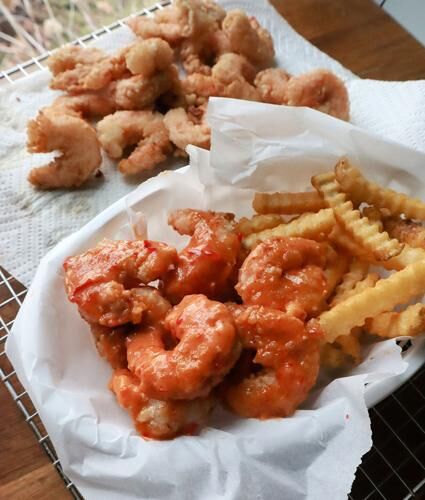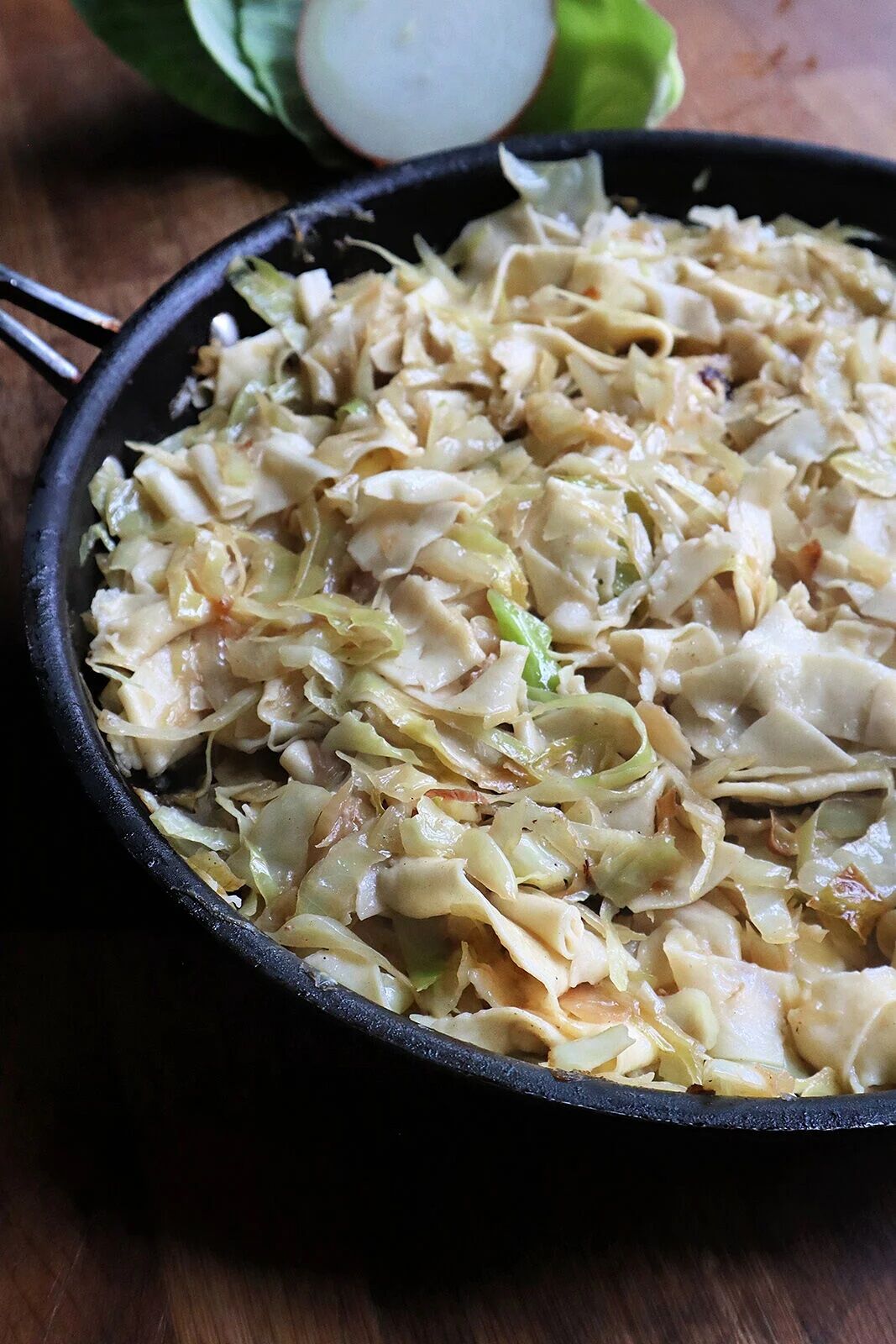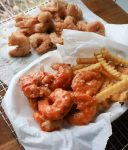There’s no question as to what menu item is the most ordered at Friday fish fries during Lent.
Across the region, in dining halls both large and small, Midwesterners love their fish, whether it’s fried, battered, baked, broiled, tossed in fettuccine or stuffed into a taco shell.
But for a fair number of fish fry aficionados, what makes a particular event not just good but great depends on the side dishes.
Which is where things get sticky.
For some, any fish fry worth its kosher salt (and malt vinegar) offers all the traditional accompaniments we tend to associate with a fish dinner: Coleslaw, French fries.
For others, it’s all about variety and being able to try side dishes that are just a little bit different. Something a little bit spicier than what you grew up eating, maybe, or dishes that speak to the ethnicity of the congregants who volunteered to cook and prepare the food and ready the orders.
For boom boom sauce
1/2
- cup mayonnaise
1/4
- cup sweet chili sauce
- 2 tablespoons sriracha, or more to taste
- Pinch of salt
For shrimp
- 1 pound large raw shrimp, peeled, deveined, rinsed and patted dry
- 1 cup cornstarch
- 1/2 teaspoon ground white pepper
- 1/2 teaspoon garlic powder
- 1/2 teaspoon salt
- 1 cup vegetable oil, for frying
Make sauce: Combine mayonnaise, chili sauce, sriracha and a pinch of salt in a bowl. Whisk to combine, taste to see if it’s spicy enough (if not, add more sriracha) and set aside while you prepare shrimp.
In large bowl, whisk together cornstarch, garlic powder, white pepper and salt.
Working in batches, dredge the shrimp in cornstarch mixture, shake off excess and place on plate or sheet pan while you heat oil.
In a large skillet heat oil to 325 degrees.
Place 4 or 5 shrimp at a time in the hot oil and cook for around 2 minutes per side, or until golden brown and shrimp is opaque.
Remove from oil and drain on a paper towel-lined plate or rack. Repeat with remaining shrimp.
Once all shrimp are cooked, add them to the bowl with the sauce and toss very gently to coat. (You don’t want to knock off the coating.)
Slide onto a platter. If desired, garnish with sesame seeds and scallions. Serve immediately.
Serves 4.
For cabbage
- 9 tablespoons unsalted butter, divided
- 2 yellow onions, thinly sliced
- Salt and pepper
- 2 pounds green cabbage (about 1 small), core chopped and leaves thinly sliced
For noodles
- 2 large eggs
- 3/4 teaspoon salt
- 2 tablespoons milk
- 1 1/2 -2 cups all-purpose flour
In a large Dutch oven or frying pan, melt 8 tablespoons of butter over medium-high heat. Add onion, season generously with salt and pepper, and cook, stirring every so often, until onion is lightly browned and starting to caramelize, 3-6 minutes.
Add cabbage, season again with a little salt and pepper, and stir to combine. Reduce heat to medium-low, cover the pot and cook, stirring occasionally, until the cabbage is tender but not mushy, 35-40 minutes.
While cabbage is cooking, make noodles.
Mix eggs, milk and salt together in large bowl until smooth. Stir in 1 cup of flour until smooth. Add additional flour, a small spoonful at a time, until the dough comes together in a ball but is still slightly sticky.
Dump dough out onto a floured surface and knead with your hands until it is no longer sticky, about 3 minutes. Cover with a damp paper towel and allow to rest for 10 minutes.
Roll out dough onto a lightly floured counter until it is paper-thin. (I cut the dough into small balls, and used a manual pasta maker machine to roll it out into long, thin strips.)
Use a sharp knife or pizza cutting wheel to slice the noodles into long strips, as narrow or wide you like.
Bring a large pot of salted water to a boil. When the cabbage is done, remove pan from heat with the lid on. Add the noodles to the boiling water and cook until tender to the bite, 2-8 minutes, depending on the size and thickness. Reserve 1/2 cup pasta water, then drain the noodles.
Add cooked noodles, a little of the reserved pasta water and remaining 1 tablespoon butter to the cabbage. Stir over medium-high heat until the noodles are the desired sauciness (you might want to add more pasta water) and shiny with melted butter, 1-2 minutes. Season to taste with salt and pepper, then serve.
Serves 6.
For dough
- 2 large eggs, divided
- 1/2 cup sour cream or plain Greek yogurt
- 3 tablespoons unsalted butter, melted and slightly cooled
- 1 teaspoon kosher salt
- 2 cups (8 1/2 ounces) unbleached all-purpose flour
- 1 tablespoon water
For filling
- 1/2 pound Yukon Gold potatoes (about 1 medium or 2 small), cut into 2-inch pieces
- 1 tablespoon plus 1/4 teaspoon kosher salt
- 1/4 cup finely shredded cheddar cheese
- 1-2 tablespoons heavy cream or whole milk
Whisk egg, sour cream or yogurt, butter and salt in bowl. Add flour to large bowl. Gently stir wet ingredients into flour. The dough will initially be very dry and shaggy, seeming as if it will never come together, but have no fear: Keep stirring and it will pull itself into shape.
Once dough starts to come together, press and smash it against the sides of bowl with your palms, picking up dough bits and essentially kneading it in the bowl until it forms a ball.
Tip dough and any remaining shaggy flakes out onto a clean work surface. Knead until smooth, about 1 minute. Cover dough with bowl and let rest 15 minutes. Whisk remaining egg and water in small bowl for egg wash.
Prepare filling: Place potatoes in a medium saucepan. Add water to cover by 2 inches. Stir in 1 tablespoon salt. Cover and bring to a boil over medium heat.
Uncover and cook until potato are tender, about 10 minutes. Drain potatoes and return to the pan. Place over low heat and stir for about 30 seconds to remove excess moisture. Run potatoes through a ricer or food mill fitted with fine disk into bowl.
Stir in remaining 1/2 teaspoon salt, cheese, and 1 tablespoon cream; consistency should be firm enough to roll into a ball. If filling is too dry, stir in additional 1 tablespoon cream.
Make pierogies: Line a rimmed baking sheet with waxed or parchment paper.
Divide rested dough into 4 equal pieces with a bench scraper or knife. Set aside 3 dough pieces and cover with mixing bowl. Roll remaining dough as thinly as possible into a rough 8-by-12-inch rectangle.
Using a 3-inch round cookie cutter, cut out 6 rounds of dough. Resist the temptation to re-roll dough scraps for additional rounds. It seems wasteful but dough won’t be as tender the second time around.
Spoon filling into center of dough rounds.
Using your finger, swipe a scant amount of egg wash — just a light touch — around the dough edge.
Fold into a half-moon shape: Either fold dough over the filling on work surface (I call this “the blanket”) or gently cup the pierogi in our hand in a U shape. (I call this “the taco.”)
Gently but firmly seal pierogi by pinching and squeezing edges together with your thumb and pointer finger. Start with 1 pinch at the top, then move to the “corner” of the pierogi and pinch along the edge back to the top. Repeat on opposite side to finish sealing.
Transfer to baking sheet and repeat with remaining dough rounds and filling.
To cook, pierogi can either be boiled (2-3 minutes for fresh, 4-5 minutes for frozen), pan-fried in oil or butter (2 minutes per side), or deep-fried in at least 2 inches of 350-degree vegetable oil (3 minutes for fresh and 5 minutes for frozen).
Makes 24 pierogi.
- 1 tablespoon clarified butter (ghee) or olive oil
- 1 onion, chopped
- 4 cup green bean, fresh or frozen, cut into 2-inch pieces
- 15-ounce can petit diced tomatoes
- 15-ounce can tomato sauce
- 1 teaspoon salt
- 1/2 teaspoon pepper
In large saucepan or Dutch oven, heat olive oil over medium heat. Add onion, and cook until translucent, 7-9 minutes, stirring frequently.
Stir in beans, tomatoes, tomato sauce and salt and pepper.
Bring to a boil, then cover and turn the heat down to low.
Simmer for 30-40 minutes, or until green beans are tender, stirring occasionally. Adjust seasonings to taste as well as salt and pepper.
Serve warm over rice pilaf or with a side of pita bread.
Serves 4-6.
- 3/4 cup sugar
- 1 1/2 cups all-purpose flour
- 3/4 cup milk
- 3/4 cup water
- 2 eggs
- Butter or oil, to cook
In large bowl, mix ingredients until well combined. Batter should be thin.
Heat an 8-inch nonstick crepe pan or skillet. Spray pan with cooking spray or lightly grease with 1 teaspoon butter or oil.
Add about 1/4 cup of batter to the pan, tilting and swirling so it covers all or most of the pan. Cook for about 2-3 minutes or until bottom is lightly browned. Flip over and brown the second side. Remove to a platter.
Continue with remaining batter, greasing the pan for each pancake, stacking one on top of another on the platter.
Serve filled with apple butter, cottage cheese, strawberries, Nutella or your favorite jam. You also can eat them plain.
Makes about 12 9-inch pancakes.
Gretchen McKay writes for the Pittsburgh Post-Gazette.














